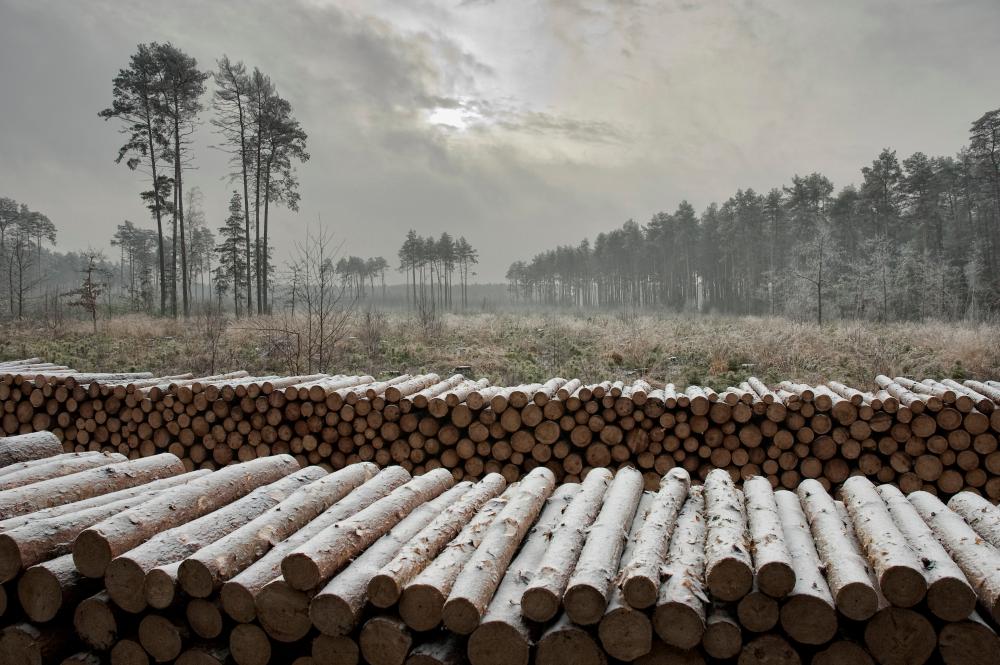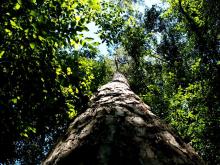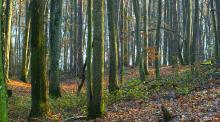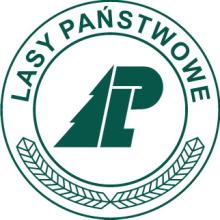 Wydawca treści
Wydawca treści
Zasady sprzedaży
Zasady sprzedaży drewna określane są zarządzeniem dyrektora generalnego Lasów Państwowych.
W ramach sprzedaży detalicznej leśnicy starają się zaspokoić szybko rosnący popyt ze strony osób wykorzystujących drewno do celów grzewczych. Wbrew pozorom są to nie tylko mieszkańcy wsi, choć przeważają wśród odbiorców. Wzrost zapotrzebowania na drewno opałowe to też skutek powstawania na przedmieściach dużych aglomeracji nowych osiedli, gdzie domy często standardowo wyposażane są w instalacje kominkowe.
Drewno opałowe jest nie tylko najbardziej ekologicznym źródłem ciepła, lecz także jest atrakcyjniejsze pod względem relacji ceny do wydajności energetycznej niż węgiel, olej, gaz czy energia elektryczna
W ostatnich latach Lasy Państwowe zwiększyły sprzedaż drewna opałowego o jedną trzecią – do ponad 4 mln m sześc. rocznie. Drewno opałowe jest nie tylko najbardziej ekologicznym źródłem ciepła, lecz także jest atrakcyjniejsze pod względem relacji ceny do wydajności energetycznej niż węgiel, olej, gaz czy energia elektryczna. Niektórzy klienci wybierają drewno już przygotowane i pocięte, inni własnoręcznie je pozyskują, po uzgodnieniu i spełnieniu określonych warunków bezpieczeństwa oraz uiszczeniu opłaty; dotyczy to głównie tzw. gałęziówki. Taki surowiec jest bardzo tani, dlatego z tej możliwości korzysta wiele osób na terenach wiejskich.
 Najnowsze aktualności
Najnowsze aktualności
Kupimy lasy i grunty przeznaczone do zalesienia
Kupimy lasy i grunty przeznaczone do zalesienia
Nadleśnictwo Puławy jest zainteresowane zakupem lasów i gruntów przeznaczonych do zalesienia, położnych w swoim zasięgu terytorialnym. Dotyczy to gmin: Baranów, Janowiec, Kazimierz Dolny, Końskowola, Kurów, Markuszów, Nałęczów, Miasto Puławy, Puławy, Wąwolnica, Żyrzyn (pow. puławski), Dęblin, Nowodwór, Ryki, Stężyca, Ułęż (pow. rycki), Garbów (pow. lubelski).
Nabycie odbywa się na podstawie art. 37 ustawy z dnia 28 września 1991 r. o lasach,
po uzyskaniu zgody Dyrektora Generalnego Lasów Państwowych, na wniosek Nadleśniczego Nadleśnictwa.
Nadleśnictwo interesują:
- lasy (grunty oznaczone jako „Ls” w ewidencji) oraz grunty przeznaczone do zalesienia
w miejscowym planie zagospodarowania przestrzennego gminy, które przylegają bezpośrednio do gruntów w zarządzie Lasów Państwowych, szczególnie przy kompleksach leśnych,
- lasy będące we współwłasności Skarbu Państwa w zarządzie Lasów Państwowych i osób prywatnych,
- działki o kształtach i wymiarach poprawiających warunki prowadzenia gospodarki leśnej,
tj. nie stanowiące długich i wąskich pasów oraz o powierzchni nie mniejszej niż 10 arów.
Nieruchomości powinny:
- mieć uregulowany stan prawny (posiadać księgę wieczystą),
- być nieobciążone hipoteką i ograniczonymi prawami rzeczowymi,
- mieć użytek działki w ewidencji gruntów zgodny z faktycznym rodzajem użytkowania,
- być bez sporów granicznych, o granicach znanych lub ustalony geodezyjnie w terenie.
Położenie gruntów nadleśnictwa można sprawdzić na stronie Banku Danych o Lasach pod adresem: https://www.bdl.lasy.gov.pl/portal/mapy
Szczegółowych informacji udziela: Andrzej Paluch tel. 81 886 42 41 wew. 27, mail: andrzej.paluch@lublin.lasy.gov.pl









